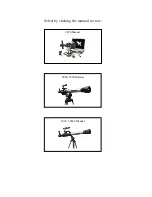
Exploration and more
Catalog
Our catalog recommends
galaxies, nebulae, stars, and comets
depending on the time and
your position. It lists thousands of objects, including:
• The main planets
• The Moon
• 110 Messier objects
• 2,500 new targets from the general catalog (CGN)
• Comets
• Thousands of small bodies in the solar system, including main belt asteroids, Jupiter,
Trojans, and the dwarf planets (V ≤ 15.5).
Source: NED - NASA/IPAC Extragalactic Database ned.ipac.caltech.edu
You can point to targets that are not yet in the catalog by entering the coordinates using
the Alt/Az or Ra/Rec button in the app’s Explore tab.
Objects like the Veil Nebula are difficult to observe and require a dark sky
to be visible. For beginning users, start with the brightest objects, like M51
or NGC 891.
10
Data
Why should I share my data with Unistellar?
HELPING TO IMPROVE THE OBSERVATION EXPERIENCE AND PARTICIPATING IN SCIENCE
(ACTIVELY OR PASSIVELY).
First of all, sharing your observation data is not mandatory—we have no access to it
if you choose not to share it with us.
The data collected by the telescope for each observation are stored in its memory and
includes raw data (images) of objects observed in Enhanced Vision mode or during scientific
missions, as well as metadata (geolocations and time stamps).
All data gathered by our users is securely stored in our database, allowing us to continuously
improve the observation experience.
By sharing your data, you can also help us make scientific discoveries. Visit our website for
more information about our active and passive scientific programs.
U
ser
guide
|
25
E
nglish








































